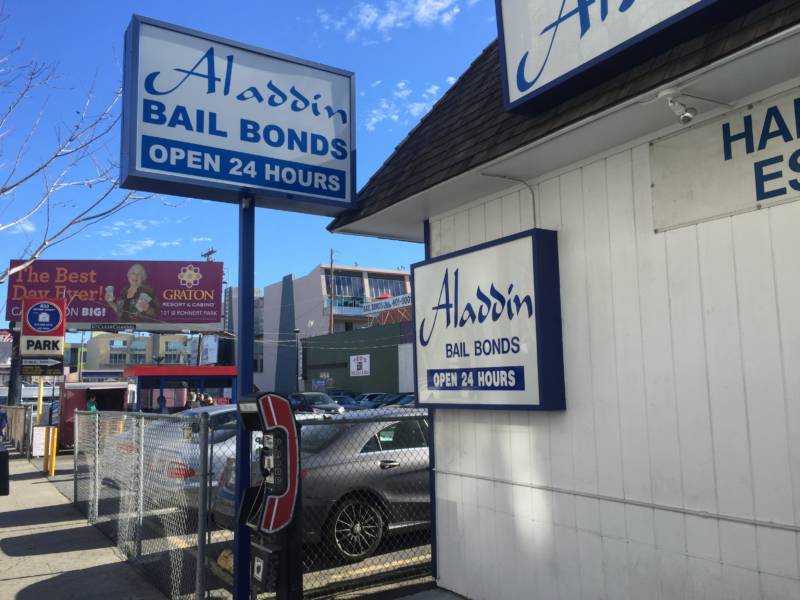After arrest, defendants are occasionally released on their own recognizance, and those accused of the most violent crimes may be denied bail entirely. Most defendants, though, are offered one of the following bail payment options (a "bond"):
Cash bond - defendant pays the full bail amount to the court, which is then reimbursed upon return, minus fees and administrative costs.
Property bond - property is used instead of cash to secure release. The court places a lien on the property until the defendant returns to court.
Surety bond - a commercial bail bond issued by a bail bond agent (or bondsman), who signs a promissory note to the court for the full amount of the bond. Bondsmen don't actually pay the full amount up front, but must show that they have sufficient resources to cover it.
A commercial bail bond is a three-party contract between the defendant, the court, and the bond agent, in which the bond agent agrees to forfeit the bail amount if the defendant fails to appear in court.
Typically, a defendant will pay a bondsmen a non-refundable fee for the service (usually about 10 to 15 percent of the bail amount). Although the practice is prohibited in a handful of states, surety bonds remain the most common form of bail in the United States.
The big business of bail bonds
On the streets near most city and county courthouses around the country, there are no shortage of bail bond businesses, flashing their services in neon.
The United States is one of only two countries in the world with an official private bail trade (the other is the Philippines), an estimated $2 billion industry with upwards of 15,000 bail agents.
“It's the only part of the criminal justice system that doesn't cost the taxpayers any money,” says Dennis Sew, Vice President of the Professional Bail Agents of the United States. Bail bond agents and the bounty hunters they employ have enforcement powers similar to police officers in terms of finding and detaining absentee clients. “The bondsman has a financial interest in the defendant," Sew explains. "We will always go looking for him.”
Bond agents vet potential clients on their ability to pay and likelihood of showing up in court.
"If you're homeless and you have nobody and there’s no guarantee you'll show up in court, then you may need to stay in jail,” Sew notes.
Bail rates
Although the Eighth Amendment of the U.S. Constitution states that “excessive bail shall not be required," critics of the system argue that bail is often set at unreasonably high rates, a factor they say disproportionately impacts poor defendants.
“So much is based not on the crime you committed but the jurisdiction in which you happen to have committed the crime," notes Daniel Macallair, of the Center for Juvenile and Criminal Justice. Bail rates for any given crime, he adds, vary widely by state and county.
Take California, where bail rates range considerably across the state's 58 counties. If you’re arrested for petty theft in Alameda County, the guideline bail amount is $15,000. But if arrested for the same offense in Orange County, you'll be liable for $20,000.
Again, this is the total amount that must be paid if a defendant fails to show up in court. In most cases, the defendant or bond agent need only pay a percentage of this total bond to gain release.
In most states, bail bond agents can't charge clients more than 10 to 15 percent of the total bail amount. Nonetheless, if your bail is $20,000, 10 percent is still $2,000, a sizeable amount of cash that a potentially innocent defendant might have to pay out-of-pocket to avoid sitting in jail for weeks or event months until trial.
It's also a factor that's led innocent defendants in certain cases to admit guilt after arrest, particularly when doing so is less costly than paying bail fees or awaiting trial in jail (even if it results in a lasting criminal record).
Monetary bail often “prevents the criminal justice system from operating in a fair and balanced way," argues Macallair, as it makes release contingent on a defendant's ability to pay, not his risk to society. Holding someone in jail pretrial, he adds, is costly for both taxpayers who foot the bill and for defendants whose employment or housing opportunities may be jeopardized.
And time spent in jail pretrial may also have an impact on the outcome of the actual trial, a factor that can potentially sway a jury during trial.
A 2013 Arnold Foundation report found that when defendants remain in jail during the period before their case is heard, they are three times more likely be convicted and sent to jail and twice as likely to be sent to prison. The report also revealed that jail sentences were three times longer and prison sentences twice as long for defendants who had been detained before their court case.
